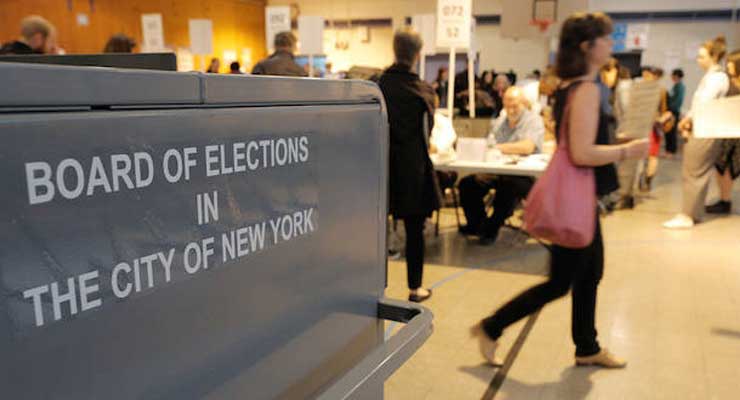
The process for picking judges is broken thanks to weak system that governs New York judicial elections
From WNYC:
Margarita Lopez Torres was elected to Brooklyn’s civil court in 1992, the first Latina civil court judge in the borough. A few years later, she wanted to run for the city’s Supreme Court — a step up the judicial ladder. She needed the support of Vito Lopez, a powerful Brooklyn Democrat.
Vito Lopez told her that to be considered for a nomination, she would need to hire his daughter as a law clerk in her court. She declined. “For rejecting that overture, she was in essence blackballed,” says James Sample, a professor at Hofstra University.
Lopez Torres was undaunted. Year after year, she asked Brooklyn Democratic leaders to back her at the annual judicial convention, where elected delegates usually rubber-stamp the party choice. Year after year, they declined. So in 2004, she sued the state board of elections. Sample was part of her legal team.
The case felt like a long shot, Sample said. But she won — in the District Court, and the Second Circuit. In 2007, the U.S. Supreme Court weighed in.
The case hinged on whether voters have a real voice in judicial elections. Frederick Schwartz, working with the Brennan Center for Justice, represented Lopez Torres. Voters have no say, he said. Party bosses are in total control.
“Never in the history of New York, not in the Republican Party, not in the Democratic Party, not in New York City, not in upstate, never has someone who was opposed by the party boss been able to become a judge,” he told the court.
It’s not a closed system, countered Theodore Olsen, for the New York State Board of Elections. Voters pick the party bosses, that’s their voice. Outsiders can run for delegate or as an independent candidate, “so there is way after way after way for individuals in New York to participate in the election process,” Olsen said. None of those ways have ever worked, but they exist, and that’s enough.
The Court agreed, overturning the ruling of the Second Circuit. Party leaders picking their people, that’s just how it’s done, said Justice Scalia.
“Party conventions with their attendant ‘smoke-filled rooms’ and domination by party leaders have long been an accepted manner of selecting party candidates,” Scalia said.
The status quo may be accepted, Sample said, but it’s deeply flawed.
“The system of smoke-filled rooms is producing candidates and ultimately judges who owe extraordinary debts of gratitude to very specific individuals,” he said. There’s rarely an express quid pro quo, he said, but “if the answer is just, well, that’s just politics – that’s an extraordinary power.”
Dennis Hawkins has been watching that power for decades, as the head of the Fund for Modern Courts. There are some tremendous judges in the city courts, he said. But still, more than a decade after Lopez Torres sued the state, good people get left out, because they don’t have the party connections.
“Right now, if you’re not a party activist, if you don’t belong to a political club, if you don’t work for that club, you will never be nominated at these judicial conventions,” Hawkins said.
No other state has judicial conventions like New York’s. The legislature could create a system of selecting judges that gave voters a real voice instead of a rubber stamp. But many state legislators, the people who can make that change, help pick judicial candidates.
“And making a judge is a very powerful tool of a politician,” Hawkins said.
Politicians don’t control every judgeship, though. Judge Lopez Torres now sits on the Surrogate Court, a role directly elected by the voting public.
Leave a Reply